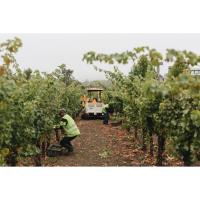Harvest in Napa: How Brix Levels Guide Winemakers | ONEHOPE
It’s mid-August in Napa, late morning before the sweltering summer heat settles in. Our enologist, Mark, is walking the vineyard rows, stopping at each cabernet sauvignon and sauvignon blanc block at our Rutherford vineyard. He’s pulling grape samples carefully from clusters across the vineyard to ensure an even representation of ripeness. Today, readers get a rare glimpse behind the scenes, following every step from grape sampling to measuring Brix (sugar levels), and understanding how these numbers guide the crucial decisions of harvest season.
By the end of this post, you’ll understand how winemakers determine the perfect time to harvest, how sugar levels shape the wines you love, and why each varietal requires its own careful attention.
Walking the Vineyard: Sampling Grapes for Precision
The day begins slowly, with the crisp early-morning air still clinging to the vines. Mark moves methodically, stopping to inspect the grapes visually, tasting a few here and there, and making notes. This is more than a casual stroll; it’s the critical step in ensuring that clusters are ripening evenly and will be picked at their highest peak of maturity. Sampling is done randomly, but with the intention that the final sample is representative of the whole vineyard. Grapes are pulled from multiple locations on each vine: top and bottom of clusters, shaded and sunlit areas, edge and center of the row. This allows for a complete picture of the vineyard’s ripeness. These samples help winemakers capture the variation caused by sun exposure, soil composition, and microclimates.
Read more here


